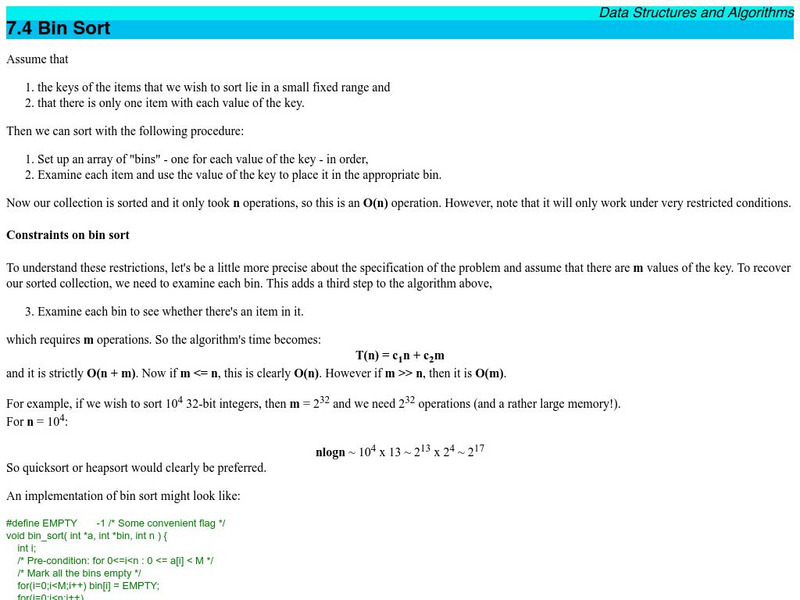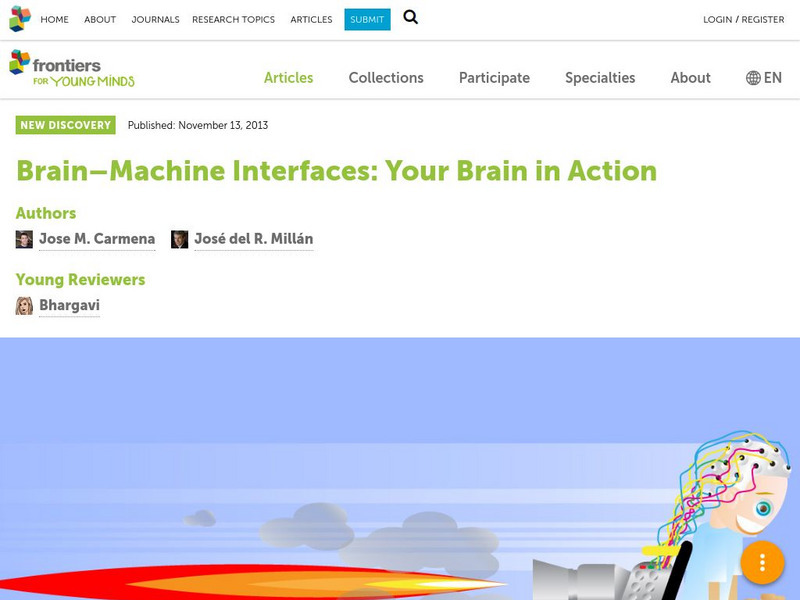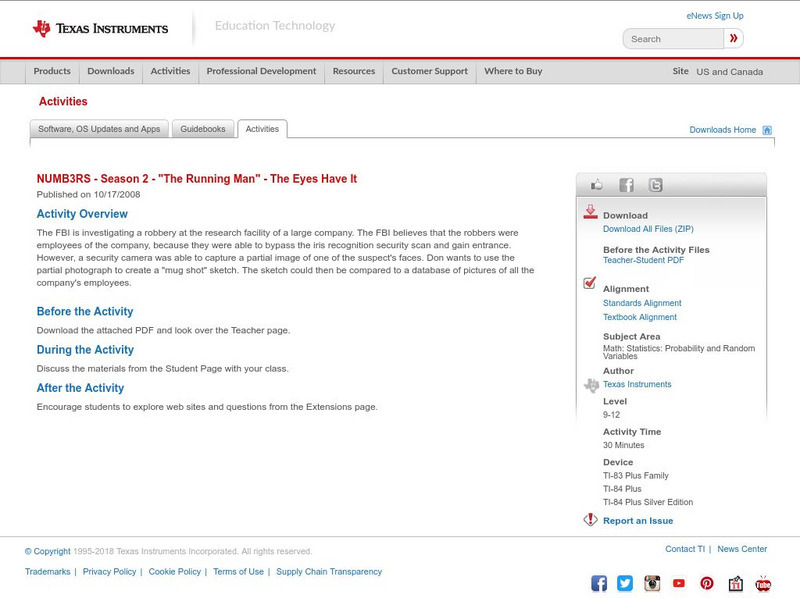TED Talks
Ted: Ted Ed: The Rise of Human Computer Cooperation
Brute computing force alone can't solve the world's problems. Data mining innovator Shyam Sankar explains why solving big problems is not a question of finding the right algorithm, but rather the right symbiotic relationship between...
TED Talks
Ted: Ted Ed: Your Words May Predict Your Future Mental Health
Can the way you speak and write today predict your future mental state, even the onset of psychosis? In this fascinating talk, neuroscientist Mariano Sigman reflects on ancient Greece and the origins of introspection to investigate how...
University of Auckland School of Computer Science
Morris: Bin Sort
A description and demonstration of the bin sort algorithm.
University of Auckland School of Computer Science
Morris: Heap Sort
A description and demonstration of the heap sort algorithm.
University of Auckland School of Computer Science
Morris: Quick Sort
A description and demonstration of the quick sort algorithm.
Frontiers Media
Frontiers: Brain Machine Interfaces: Your Brain in Action
Brain-machine interfaces (BMI), or brain-computer interfaces (BCI), is an exciting multidisciplinary field that has grown tremendously during the last decade. In a nutshell, BMI is about transforming thought into action and sensation...
University of Cambridge
University of Cambridge: Maths and Sports: Medal Muddle
Can you work out which order these thirteen nations finished in after competing? This activity presents an exercise in strategic thinking, accessible to lower secondary students (but hinting at the more advanced mathematics of sorting...
Google
Google for Education: Indefinite Articles
Students identify a pattern in the usage of the articles 'a' and 'an' and then write an algorithm that others can follow to correctly use these two indefinite pronouns, and they identify possible exceptions the general rule.
Texas Instruments
Texas Instruments: Numb3 Rs: The Eyes Have It
Based off of the hit television show NUMB3RS, this lesson lands students as investigators who must explore the usefullness of iris scan (security) algorithms. In the first part of a lesson, a given probability is used to determine how...
Illustrative Mathematics
Illustrative Mathematics: 4.nf Writing a Mixed Number as an Equivalent Fraction
The purpose of this task is to help students understand and articulate the reasons for the steps in the usual algorithm for converting a mixed number into an equivalent fraction. Aligns with 4.NF.B.3.c.
Better Lesson
Better Lesson: Representing Fraction Multiplication Day 2
What does it mean when you multiply fractions? How can you multiply fractions without drawing a diagram? Students build on their skills for multiplying fractions and they work to develop an algorithm.
Code.org
Code.org: Cs Fundamentals: The Big Event
Learners will soon learn that events are a great way to add flexibility to a pre-written algorithm. Sometimes you want your program to be able to respond to the user exactly when the user wants it to. Events can make your program more...
Better Lesson
Better Lesson: Division of Multi Digit Numbers
Practice makes perfect and in this instructional activity students will be practicing long division using the standard algorithm plus they will be interpreting remainders!
Better Lesson
Better Lesson: Multiplying With Decimals Day 2
If 24 x 63 =1512, then what will be the product for 0.24 x 6.3? Students work on answering these questions and solidifying an algorithm for multiplying decimals.
Better Lesson
Better Lesson: Multiplying With Decimals
How do you multiply decimals? Where does the decimal point go? Students work on answering these questions and developing an algorithm for multiplying decimals.
Khan Academy
Khan Academy: Subdivision Weights (Practice)
This is 4-problem quiz/practice. What of the following weights could be used for the subdivision algorithm to give us a fractal?
Better Lesson
Better Lesson: Dividing With Fractions
Sixth graders model division using whole numbers and fractions and divide whole numbers and fractions using the standard algorithm.
Khan Academy
Khan Academy: Simple Image Compression
Lossless single image compression by using the algorithm run-length encoding (RLE).
Khan Academy
Khan Academy: Solving Hard Problems
Check your understanding of when algorithms use heuristics and which problems are undecidable, in this set of free practice questions designed for AP Computer Science Principles students.
Khan Academy
Khan Academy: Dividing Whole Numbers Like 56 Divided by 35 to Get a Decimal
Divide two whole numbers to get a quotient with a decimal. This exercise uses the standard algorithm to find the quotient.
Better Lesson
Better Lesson: Review 7: Painting Tables Dividing With Fractions
How do you visually represent dividing with fractions? When you have a remainder, what does it actually mean? Students look for patterns and create algorithms for dividing with fractions.
Other
Nearpod: Adding Integers: Visual Approaches
In this lesson, students learn several methods to adding integers, including visual approaches and the standard algorithm.
Other popular searches
- Numerical Algorithms
- Division Algorithm
- Multiplication Algorithms
- Addition With Algorithms
- Addition Algorithms
- Subtraction Algorithms
- Standard Algorithm
- Math With Algorithms
- Partial Products Algorithm
- Partial Sums Algorithm
- Adding Integers Algorithm
- Dividing Algorithm



















